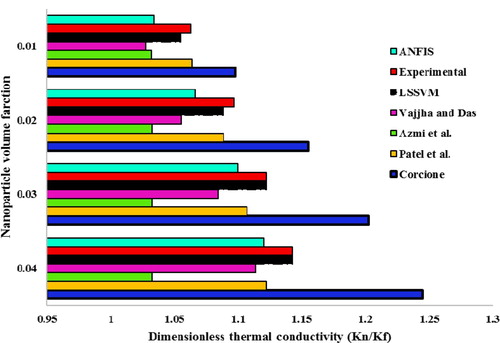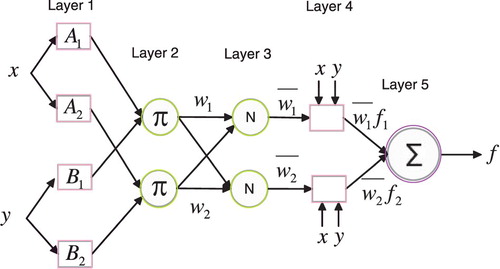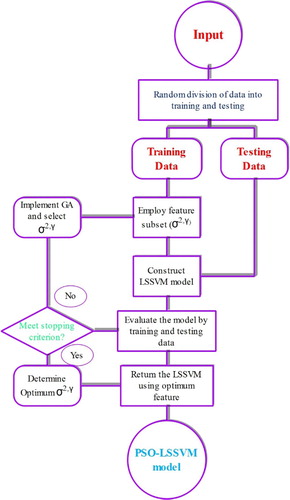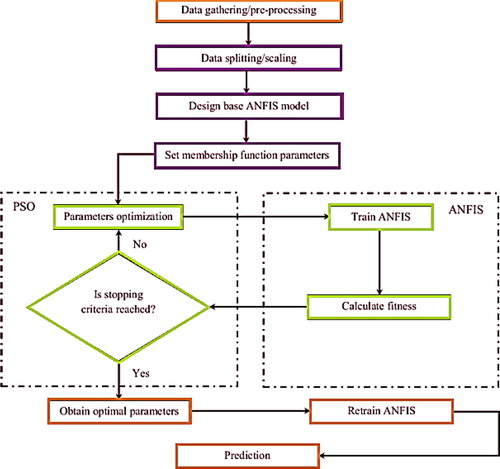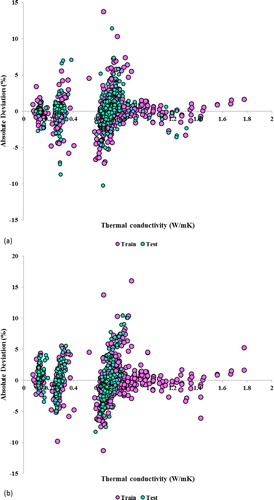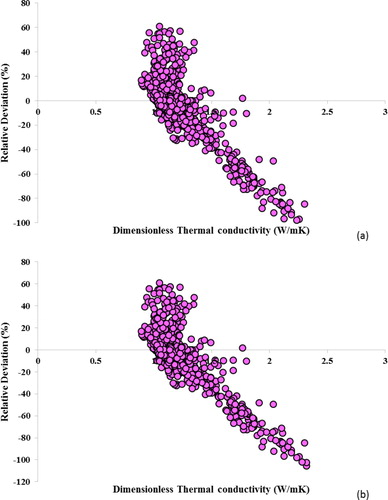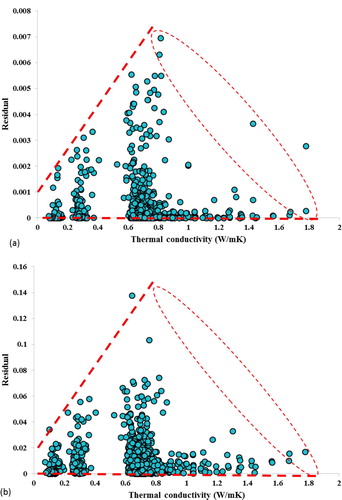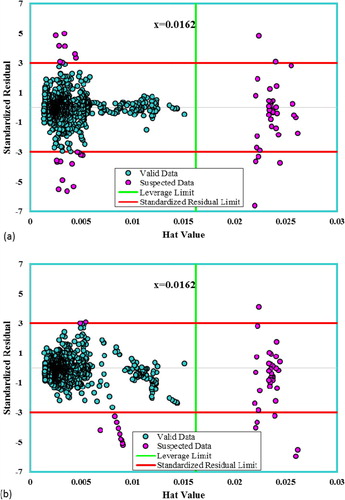Figures & data
Table 1. Details of trained LSSVM and ANFIS algorithms.
Figure 4. Regression plots between experimental and estimated thermal conductivity by LSSVM for: (a) training data, (b) testing data (c) total data.

Figure 5. Regression plots between experimental and estimated thermal conductivity by ANFIS for: (a) training data, (b) testing data (c) total data.
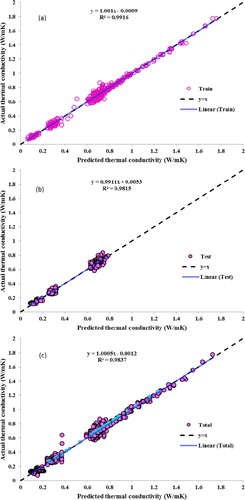
Table 2. Statistical analyses obtained from the models.
Figure 8. Comparison of LSSVM and ANFIS models with different models to estimate dimensionless thermal conductivity of Al2O3-water nanofluid.
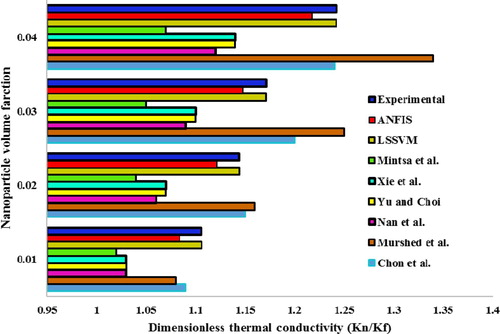
Figure 9. Comparison of LSSVM and ANFIS models with different models to estimate dimensionless thermal conductivity of Ag-water nanofluid.
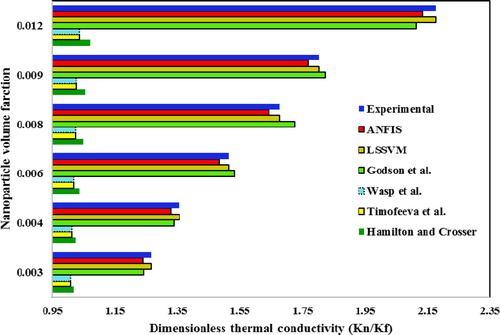
Figure 10. Comparison of LSSVM and ANFIS models with Thang et al. model to estimate dimensionless thermal conductivity of CNT-water nanofluid at different temperatures.

Figure 11. Comparison of LSSVM and ANFIS models with Thang et al. model to estimate dimensionless thermal conductivity of CNT-water nanofluid for different particle sizes.
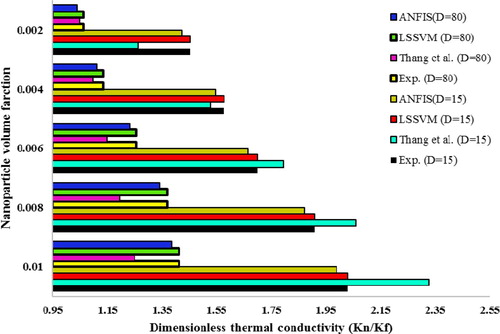
Figure 12. Comparison of LSSVM and ANFIS models with different models to estimate dimensionless thermal conductivity of CuO-water nanofluid.
